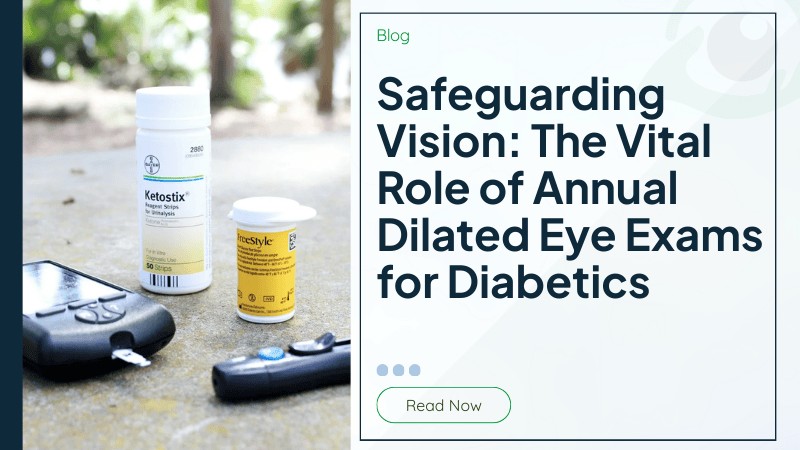- About
- Services
- Conditions
- Pricing
- Book an Eye Exam

Diabetes, a chronic metabolic disorder characterized by elevated blood sugar levels, manifests in various forms, each with its unique etiology, symptoms, and management strategies. Understanding these types is crucial for effective diagnosis and treatment. Additionally, diabetic retinopathy, a common complication of diabetes, poses significant risks to vision and overall health. Visit our Eye Clinic in Southcentre Mall Calgary to book a diabetic eye exam near you with one of our best Calgary Optometrists.
Diabetic retinopathy is a serious complication of diabetes that affects the eyes, specifically the retina, the light-sensitive tissue lining the back of the eye. Prolonged exposure to high blood sugar levels damages the blood vessels nourishing the retina, leading to various eye problems. There are two main stages of diabetic retinopathy:
Macular edema is another common complication of diabetic retinopathy that can occur at any stage of diabetic retinopathy. It occurs when fluid accumulates in the macula, the central part of the retina responsible for sharp, central vision. As fluid builds up, it distorts the macula, leading to blurred or distorted vision. Macular edema can significantly impair visual function and quality of life if left untreated.
Several risk factors contribute to the development and progression of diabetic retinopathy, a common complication of diabetes that affects the eyes. These risk factors include:
It's essential to note that diabetic retinopathy often develops without any noticeable symptoms in its early stages. Regular eye exams are crucial for individuals with diabetes to detect diabetic retinopathy early, when treatment is most effective in preventing vision loss. If you experience any changes in your vision, it's crucial to seek prompt evaluation by an eye care professional. However, As the condition progresses, you might notice the following:
A comprehensive diabetic eye exam involves several key components to assess the health of the eyes, particularly for individuals with diabetes who are at increased risk of developing diabetic retinopathy and other eye complications. Here's what typically occurs during a diabetic eye exam:
The frequency of diabetic eye exams varies based on individual risk factors, disease severity, and established guidelines. According to the Canadian Association of Optometry (CAO), individuals with diabetes should undergo comprehensive eye examinations annually, regardless of their age or diabetes type. These recommendations align with the guidelines set forth by Diabetes Canada, emphasizing the importance of proactive eye care to prevent or manage diabetic retinopathy, diabetic macular edema, and other ocular complications. Based on the exam findings, your Calgary Optometrist near you may recommend more frequent exams. Diabetic eye health exams are covered by Alberta Health Care for patients of all ages. Please note that a diabetic eye health exam differs from a routine eye examination and does not include a prescription for eyeglasses or contact lenses.Treatment options for diabetic retinopathyFortunately, significant advancements have been made in the treatment of diabetic retinopathy, offering hope and improved outcomes for affected individuals.
Regular diabetic eye exams are essential for early detection, monitoring, and management of diabetic eye complications, particularly diabetic retinopathy. By incorporating various diagnostic tools and techniques, a top Optometrist can comprehensively assess the eye health of individuals with diabetes, ultimately preserving vision and promoting overall well-being. Maintaining regular follow-ups and adhering to recommended screening intervals are paramount in mitigating the risks associated with diabetic eye disease. Our Southcentre Mall Calgary Eye Clinic has qualified Optometrists and all the gold standard technology to provide you with a thorough diabetic eye exam near you.
Book your comprehensive eye exam in Calgary with Eye Check Calgary. Whether it’s digital eye strain, dry eyes, diabetes-related vision concerns, or a contact lens fitting, we’ll guide you through every step with care and clarity. Call us today at 587-441-5254.